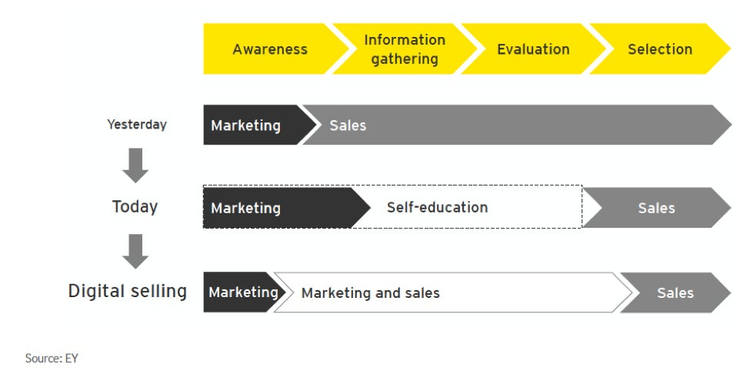How to Integrate Marketing and Sales

According to a recent report by D&B, companies that work to align their marketing and sales departments improve their ROI by up to 20%. And yet, in many companies, these two departments continue to work completely independently and miss opportunities for their online marketing due to a lack of coordination. If you want to know how to avoid this, read on!
Why Marketing and Sales Need to Be Aligned?
Traditionally, the division between marketing and sales has been experienced as a source of rivalry, or even tensions.
Marketers are analytical and look at the long term, while sales marketers have personal skills and focus on immediate closing.
These are two very different work cultures, and that is why we often fall into trying to prove that one is “better” than the other or that it achieves more results in a specific company. But this is a serious mistake.
More than rivals, marketing and sales departments should work as brothers, as they both have a common goal: to generate new customers and close conversions. To understand how this works, let’s first look at how the selling and buying cycles work.
In decades past, the cycles of selling and buying coincided completely. However, thanks to digital marketing, users have more autonomy to research and make decisions, so they can start their buying cycle independently of the company.
In the sales cycle, the company goes through different phases until it manages to convert the potential consumer into a customer. These phases are known by the acronym AIDA:
- Attention: Here we seek to draw the consumer’s attention to the company’s products and services.
- Interest: it is about answering the question “what does this bring to me?”, that is, making users see that the company’s products and services can be useful or valuable to them.
- Decision: Here, the aim is to get the potential customer to decide to purchase the product or service.
- Action: the closing of the sale or conversion.
For its part, the purchase cycle also responds to the same acronyms, but the phases are slightly different, and the impulse comes from the user and not from the company:
- Attention: the user realizes that he or she has a need or a problem.
- Research: the user looks for how to solve this need, seeing which companies could help them. This is when the buying cycle begins to overlap with the selling cycle.
- Decision: once they have been informed about different possibilities, the user analyzes which offer interests them most.
- Action: the closing of the purchase.
Marketing and sales: a model for working together
As you can see, marketing and sales have a lot in common in their work cycles. But for them to work together, some preconditions must be met:
- Have systems for detecting sales opportunities, which allow you to identify potential customers when they are still in the research phase.
- Have a common database of potential contacts.
- Design a process that allows users to follow them throughout the purchase cycle, making them go deeper into the conversion funnel. For example, we can have a method based on lead nurturing, in which the user is offered content that responds to their specific needs.
- Adopt a lead scoring system that allows contacts to be assessed according to their chances of conversion, according to criteria shared by the marketing and sales departments.
With all this in place, it’s time to get to work in an integrated way. And for it to work, both marketing and sales must do their part.
The marketing department will be responsible for implementing different digital (or offline) marketing strategies to get leads, that is, contacts potentially interested in acquiring the company’s products and services. Once the lead is mature enough, they will pass it on to the sales department, along with the information collected during the process (interests, behaviors, etc.).
For the collaboration between both departments to be fluid, marketing managers must follow the sales guidelines in order to obtain leads of sufficient quality.
For its part, the sales department will be in charge of acting quickly, following up on these leads that take into account their unique characteristics. For this process to work, marketing and sales must agree on the requirements that leads must meet, the scoring technique, and the right time to pass contacts from one department to another.
Some recommendations to better integrate sales and marketing
Finally, I want to share with you some recommendations at the management level that can help ensure that marketing and sales departments work in harmony:
- Make sure that both teams speak the same language. Sometimes, when we try to establish a collaboration between marketing and sales, we see that each team uses different terms or definitions: contact, qualified lead, growth opportunity… They may even have designed customer journeys that don’t match each other. Therefore, the first step is to put all this information in common.
- Organize regular meetings between marketing and sales. For a collaboration to work, communication is critical. In addition to having common channels to talk about throughout the day (such as a company chat or messaging service), it is also necessary for both teams to meet physically frequently to share problems and solutions. And if you can get people from both departments to sit alternately, all the better.
- Create cross-training between marketing and sales. In order to work together, it is imperative that both departments understand each other’s work. Organize training sessions where the two of you can share your wisdom and working methods, and even “swaps” where one worker can go to the other department for a week to see their work up close. You will see how much effort is worth it.










